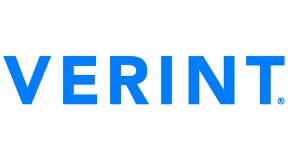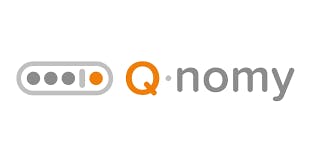12 Best Virtual Queue Management Systems for Retail


In the world of retail, time really is money. 20% of customers will walk out of your store if they’ve been waiting for over three minutes for service. In other words, slow service could be costing you millions of dollars per year across your stores.
How to find the best Virtual Queuing Software
To ensure you’re searching the correct phrases to see the best Queue Management System results, it may also be worth searching for the following terms:
- Wait Line Software
- Virtual Line System
- Walk-up Software
- Line Management App
- Mobile Ticket App
- Online Queue Software
What are the benefits of using a Digital Queuing System?
There are several proven advantages of using a Digital Queuing Software in retail to manage the customer waiting experience, such as:
- Increased unplanned purchasing: When customers are free to explore the store while they wait in a virtual queue, they’re much more likely to spot and buy products and services they may otherwise have overlooked.
- More efficient shop floor operations: By displaying all waiting customers in a centralized queuing platform, you can greatly reduce store team idle time because your store team can clearly see who is waiting for service.
- Higher return rates: By investing in your Customer Choreography Software, you’re creating a more enjoyable in-store experience. That’s a key benefit because happy customers are returning customers.
Advantages of using an enterprise retail-focused Online Wait List System
Enterprise retailers have vastly different software needs than midsized and smaller businesses which is why it’s imperative to find an enterprise-retail oriented system.
After all, enterprise software systems have benefits including:
- Ability to quickly integrate with existing systems retailers use
- All-in-one software to support every customer journey from appointment and event customers to walk-in and click and collect customers
- Constantly evolving software solutions that are specifically tailored to enterprise retail use cases
- Complete security, data protection and GDPR compliance
Which features do the Queue Management Software providers offer?
Check out the table below to find out which key features the leading Queue Management Systems around the world come with.
Who has the best Queue Management System?
We’ve compiled a list of the top Online Queuing Systems based on our in-depth analysis of the current market, beginning with the most relevant providers for enterprise retailers.
However, we’re unable to disclose estimated software costs because enterprise software providers their rates on a case-by-case basis.
1. Verint

Founded with the mission to revolutionize retail, Verint is one of the few Digital Wait Line Management Software companies who have designed their solution with enterprise retailers in mind. Verint has spent the last decade building their SaaS Retail Choreography solution suite to help global clients to drive profitability, retain new customers and achieve lasting brand relevance.
Overview
- User Interface (UI): Verint’s software engineers frequently update the UI on their Virtual Queue App. They have a reputation among HQ and store users of designing intuitive interfaces that anyone can use. Their team are also known to be very responsive regarding support tickets.
- Settings: Head office users can centrally manage their Verint settings across their stores.
- Hardware compatibility: Verint’s cloud-based software is compatible with hardware including your kiosks, TV displays, tablets, mobiles and more. You can even use the software on IOS and Android devices, along with any desktop browser.
- Business intelligence: Verint collects over 100 new data points on every customer that your store team serves through their platform, including why they visited your store and what their experience was like.
- Integrations: Verint has key integrations with Calendar, CRM tools and more. They also have APIs to help you build custom integrations.
- System architecture: Verint uses a powerful and sophisticated Microservice and partners with AWS to guarantee a powerful and reliable service.
- Clients: Burberry, Nike, Pandora, Samsung, Meijer Pharmacy, Tesco, IQOS, NatWest, Benefit Cosmetics, Currys.
- Available since: 2012.
2. JRNI

JRNI (previously known as “BookingBug”) originally focused on offering Appointment Scheduling Services to small and mid-size businesses (SMB) before turning to the public sector. More recently, they’ve also begun to offer Virtual Queue Management Services to enterprise retailers, particularly in America and Australia.
Overview
- Multiple servers: Microservice systems are considered to be more scalable, less bug-prone and to enable quicker software changes. Nevertheless, monolithic system architectures that rely on multiple services, such as the one JRNI relies on, have some advantages. For instance, it’s relatively simple to manage these systems.
- Reliability: JRNI’s Virtual Queue Management Platform has a relatively high uptime, meaning it’s unlikely to crash in the middle of service.
- Customization: JRNI’s customization options are fixed, so you won’t need to spend much time customizing the look and feel of your Scheduling Software.
- Clients: Co-op, Levi’s, Kingfisher, Jojo Maman Bébé, KBC and Bed Bath & Beyond.
- Available since: 2012.
3. Qmatic

Primarily focussed on the public sector, Swedish company Qmatic offers top-of-the-range Virtual Waitlist hardware.
Overview
- New software: They’re planning to add a cloud-based solution to their small but growing solution suite later this year. This software will likely work with your existing on-site hardware to make it easier to centrally manage your settings.
- Repairs: As and when you ever need Qmatic to repair your hardware, you have the option to ship your kiosks back to Sweden. Typically, you’ll be back up and running once Qmatic has returned your repaired kiosks.
- Sector agnostic: Qmatic has some legacy capabilities which are particularly relevant to public and healthcare sector companies, although the company remains sector agnostic.
4. Q-nomy

US company Q-nomy primarily creates hardware Smart Queue Management Solutions for their European clientele. In recent years, they’ve also been developing software solutions.
Overview
- Public and health care focussed: Q-nomy primarily markets their Queue Management System to businesses within the public or healthcare sector.
- Hardware-based: If you have extra store space, you can install Q-nomy’s kiosks anywhere on the shop floor to make them accessible to customers.
- Clients: Medicare, BECU, Nottingham University Hospital and Orange.
- Available since: 2002.
5. Clientela
![]()
Clientela has one of the best Virtual Queue Softwares with a number of functionalities. They typically work with midsize businesses.
Overview
- Staff interface on desktop: While Clientela’s users may need to wait a little longer if they want to use staff apps on IOS and Android, they’re currently able to use the Wait Line Management System on any desktop browser.
- Clients: Gucci, Cartier, Topshop, Bally and MaxMara.
- Available since: 2020.
6. Qminder

Qminder is an Estonian-based scale-up that launched in 2011. They offer a modest cloud-based Digital Wait Line solution to small businesses predominantly.
Overview
- UI: Qminder has a traditional and seasoned UI which store associates generally don’t struggle to use.
- Data analytics: Qminder’s data analytics tool enables you to find out a little bit more about what your customers do in your stores.
- Integrations: While Qminder may not have all the key integrations enterprise retailers need from a Queue Management System, they do offer some lesser-known integrations for small businesses.
- Clients: Bolt, Verizon, Marines, John Hopkins University and AT&T.
- Available since: 2011.
7. QLess

American company QLess was founded in 2007 with a focus on providing hardware solutions to public sector clients. The three products they offer include Queue Management, Appointment Scheduling, and Business Intelligence tools.
Overview
- UI: After a few key training sessions, store teams are generally able to find their way around QLess’ intricate UI.
- Features: QLess offers an off-the-rack hardware solution with a range of fixed functionalities intended to improve the customer waiting experience.
- Clients: Department of Motor Vehicles (DMV), Minneapolis Saint Paul International Airport (MSP), FISH Technologies and Port of Antwerp.
- Available since: 2007.
8. Zebra Technologies

Mobile computing company Zebra Technologies is an American retail-centric Virtual Queue Software provider. Alongside their queuing technology, they also manufacture things like thermal barcode labels and receipt printers.
Overview
- Solution suite: Zebra has grown a reasonably sized solution suite, acquiring Reflexis Systems, a Task Management System provider in 2020. Solutions include: in-person (rather than virtual) Appointment Booking, Virtual Queuing and Task Management Software solutions.
- CRM integration: Any Customer Flow Management Software worth its salt needs to integrate with different CRMs, like Salesforce and Exponea. Zebra integrates with both systems.
- Clients: Multimoto, Vera Badley, Forza, Havan and Carol Pharmacies.
- Available since: 2020.
9. Whyline

Cloud-based provider Whyline is a newcomer to all things virtual queuing, specializing in mobile queuing. They’re industry agnostic, with clients across healthcare, government, telecommunications and retail.
Overview
- Functionality: Whyline offers a few key features such as self-management whereby customers can join a queue independently in-store.
- Sector generalized: Because Whyline doesn’t focus on any particular industry or sector, they can address use cases across multiple sectors.
- Clients: Ficohsa, LAX, Salta Tuciudad, Clínica Einstein, Macro and Irving Texas.
- Available since: 2015.
10. Lavi Industries

Established in 1979 in Los Angeles and originally a manufacturer of railing systems, Lavi Industries has made quite the industry segue. In 2008, they launched their first Virtual Queuing Software, Qtrac.
Overview
On-premise configuration: Toggle one-by-one with your stores Queue Management Platform settings for optimal performance.
- Solution suite: Lavi Industries solutions include: Appointment Booking, Virtual Queuing and Data Analytics Software.
- Responsive team: Lavi Industries Customer Support team are typically easy to reach during working hours.
- Clients: U.S. Air Force, Scotiabank and U.S. Cellular.
- Available since: 2012.
11. Skiplino

Founded in 2015, Skiplino is another start-up cloud-based customer Queue Management System with a variety of tools to help customers to virtually wait in line.
Overview
- Data Monitoring: Skiplino uses a Data Monitoring Software that collects real-time data about customer wait times. While they don’t have a centralized platform to control data across your stores, you can view your information individually, store-by-store.
- Clients: DHL, Delta Airlines and Careem.
- Available since: 2015.
12. Wavetec
![]()
Established in 1986, Dubai-based hardware provider Wavetec predominantly offers Digital Wait Line solutions in the middle-eastern market.
Overview
- Messaging integration: Wavetec has slowly built a variety of queue management options. Notably they’ve integrated with WhatsApp to allow customers to join a virtual queue from their phone. They also manufacture self-service ticket dispensing kiosks.
- Business intelligence: Wavetec’s Digital Waitline System comes integrated with Business Intelligence tools to help retailers’ capture data on customer activities in-store and online.
- Clients: Banorte, Asiacell, Consum, Zapopan and Delta Airlines.
- Available since: 2002.
Should You Build Your Own Queue Management System?
Unsure whether to build or buy in-store software? The DIY approach is nearly always more hassle than it’s worth. You’re guaranteed to spend more money over a longer period to build a basic Virtual Queue System. Sometimes it’s best to leave it to the experts.